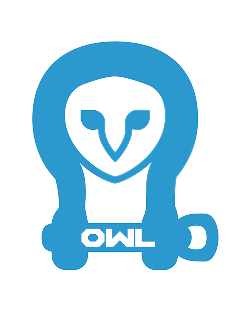The INEOS Grenadier Faces Moab’s Most Brutal Trails—Did it Survive?
At Owl, we don’t just manufacture premium upgrades for Sprinter Vans and the Grenadier; we run our products through the ringer, pitting them against the most unforgiving terrains in North America. Our recent Moab adventure raised the bar for off-road testing. Here’s what we discovered about the Grenadier’s real-world capability—and where smart upgrades make all the difference.
Moab: The Ultimate Off-Road Testing Ground
Moab, Utah needs no introduction if you’re serious about off-roading. With iconic trails like Steel Bender, Hell’s Revenge, Fins and Things, Poison Spider Mesa, and Moab Rim, it’s where theory meets reality. Some vehicles show up to Moab for a photoshoot; we came to test, break, and rebuild. Our fleet of Grenadiers (stock and loaded with custom gear) faced every challenge head-on.
Grenadier: More Than Heritage Looks
The INEOS Grenadier draws inspiration from classic off-road legends, but does it live up to the vehicles it was inspired by?
Short answer: It’s the real deal. Our team—including seasoned pros like Dan Fresh (professional off-road racer) and experts from Adrenaline Vans and Owl Offroad—set out to find the Grenadier’s limits. What happened next was a masterclass in engineering, strategy, and vehicle recovery.
Trail-by-Trail: Lessons From Moab’s Brutal Obstacles
Steel Bender: Initiation by Rock
Within minutes on Steel Bender, we knew this wasn’t a park trail. The Grenadier’s rugged build gave us confidence, and after a few “didn’t really steer” moments and some creative use of throttle, the team pushed through. No major casualties—just some cosmetic marks.
Hell’s Revenge & Hell’s Gate: Precision or Peril
Hell’s Gate separated the bold from the wise. “It’s easy if you get it right and upside down if you get it wrong,” Dan Fresh warned. Every obstacle put the Grenadier’s approach, clearance, and articulation to the test, and Owl’s Highline bumper (engineered for maximum approach angle) proved its worth. Skid plates and rock sliders absorbed impacts, and despite the notorious reputation of Hell’s Gate for rollovers, our group tackled it—with a few scratches to show for the effort.
Mickey’s Hot Tub: Winch It, Live Another Day
Moab is nothing if not humbling. Mickey’s Hot Tub forced us to deploy the winch after multiple attempts. The lesson: When tackling vertical, loose, or technical exits, a reliable winch isn’t optional—it’s critical.
Fins and Things: Technique Over Raw Power
Sandstone ridges and roller-coaster undulations define Fins and Things. Improved ground clearance (thanks to our Grenadier Highline Bumper and suspension upgrades) let the Grenadiers roll obstacles without hesitation. When tire pressure dropped too low during “Barbie Jeep donuts,” rapid trail-side repairs kept us moving. The right air-down toolkit and onboard compressor are essentials for any serious wheeler.
Poison Spider Mesa & Moab Rim: Ultimate Suspension Test
As trails got steeper and exposed, both factory and modified Grenadiers worked every degree of available articulation. After-market suspension upgrades widened the margin for error, but even the stock setups made it—provided drivers finessed tire placement and kept a cool head.
Gear That Made the Difference
Moab doesn’t suffer fools—or ill-prepared rigs. Here’s what we recommend, based on field-proven experience:
Grenadier Bumper: Highline Winch – Advanced approach angle, stout construction, and no sweat handling the nastiest ledges.
Rock Sliders & Skid Plates – Moab’s signature ledges and boulders threatened more than paint; body and mechanical protection is mandatory.
Grenadier Suspension: Trail-Flo 4" Lift – Dan’s Grenadier with the lift handled the biggest drops with poise, preserving undercarriage integrity and approach/departure angles.
Air Tools & Compressors – Essential for immediate repairs and managing tire pressures for varying trail conditions.
Winch – More than once, recovery gear differentiated “stuck for a minute” from “stuck all day (or night).”
Every piece of kit faced real-world action. If you’re building your Grenadier for serious adventure, integrate equipment that’s as tough as the terrain.
The Reality: Grenadier’s Off-Road Chops
Key Insights:
Solid Base: Out-of-the-box, the Grenadier is no poser. It handled steep inclines, leaned into off-camber ledges, and survived technical recoveries with minimal drama.
Upgrades Maximize Confidence: The right bumper, suspension, and protection transform “maybe” into “let’s go.”
Mechanical Reliability: Other than trail-induced cosmetic damage and a license plate taking a beating (“Obviously a manufacturing defect,” Ricardo quipped), mechanical failures were rare, and field fixes (like resetting a stubborn transfer case) kept the adventure on track.
Driver Skill Counts: It’s not just the rig—smart line choice, knowing when to throttle up or back off, and effective recovery execution separated sketchy moments from serious incidents.
Pro Tips for Aspiring Moab Adventurers
Never Underestimate the Trail: Even experienced drivers can get in hot water.
Prep for Recovery: Winches, shackles, and a competent recovery team are non-negotiable.
Air Down Appropriately: Too much (or too little) pressure is a recipe for tire issues and getting stuck.
Upgrade Safely: Protect your investment with proven products; cut corners and Moab will find your weak spots.
Moab was the crucible that separated the pretenders from the contenders. As noted in our trip’s conclusion, “We learned that the INEOS Grenadier isn’t just about rugged looks and heritage styling. It’s the real deal. Time and time again, it proved itself as an incredibly capable off-road machine, far exceeding all expectations.”
If you’re ready to take your Grenadier or Van into the wild—or just want to know what gear can stand up to the most demanding terrain, check us out. Our products aren’t just built for adventure; they’re proven where it counts.
Read more








